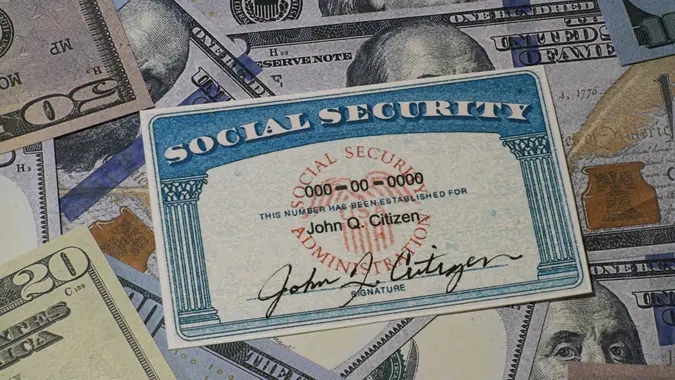Social Security: An Incorrect Work Record Could Your Lower Benefits — Here’s How to Fix It

Commitment to Our Readers
GOBankingRates' editorial team is committed to bringing you unbiased reviews and information. We use data-driven methodologies to evaluate financial products and services - our reviews and ratings are not influenced by advertisers. You can read more about our editorial guidelines and our products and services review methodology.

20 Years
Helping You Live Richer

Reviewed
by Experts

Trusted by
Millions of Readers
If there is an error or missing information on your Social Security earnings record, you might be getting less retirement money than you are entitled to.
Since the beginning of Social Security, there have been a total of $1.2 trillion in wages that could not be matched to an earnings record. Because they couldn’t be matched, they were added to the Earnings Suspense File, the electronic holding file known as Social Security’s “secret stash.”
The Social Security Administration (SSA) calculates your benefits by using your highest 35 years of earnings as the base. If any of these 35 years is incorrect or missing altogether, the average is skewed negatively. Unless you’re attentive about monitoring your earnings record, a single mistake or an earnings gap in your calculations could have a substantial impact on your Social Security benefit payment.
How Long Do You Have to Fix the Data?
If you did look at your earnings record and notice a mistake, the burden is yours to prove it, and there is a time limit to do so. The SSA’s policy on fixing an earnings record states, “An earnings record can be corrected at any time up to three years, three months, and 15 days after the year in which the wages were paid or the self-employment income was derived.”
This limit looks strict and set in stone when you read it on a screen, but there are several exceptions to this rule. Also, if there is a genuine error on the part of the SSA, your employers or your recorded earnings, you should be able to rectify it by working with the SSA. If you are missing supporting documentation, you might have to build some profiles of employers and dates of employment from days long gone by.
How Do I Update the Record?
You will need to contact Social Security to amend your earnings record. You can do so via their website at www.ssa.gov or call 1-800-772-1213 (1-800-325-0778 TTY) from 8 a.m. to 7 p.m., weekdays. You’ll need to provide the following record(s):
- A W-2 form (Wage and Tax Statement).
- A tax return.
- A wage stub or pay slip.
- Your own wage records.
- Other documents showing you worked.
If you do not have any of these, you can also try providing the SSA with the following information so they can help you:
- Where you worked.
- The name of your employer.
- The dates you worked.
- How much you earned.
- The name and Social Security number you used when you worked.
Whether you are ready for retirement or not, a yearly record check of your employment history and Social Security statements is a good idea. As is having a Social Security account. Dealing with fussy records or paperwork is often more arduous than most are prepared to undertake. However, when talking about money rightfully owed to you and what you deserve for a life of working, it can be well worth the effort.
More From GOBankingRates
- Nearly 1 in 3 Americans Hit by a Costly Holiday Scam, Norton Survey Shows -- How To Avoid This
- Here's What the Average Social Security Payment Will Be in Winter 2025
- How Middle-Class Earners Are Quietly Becoming Millionaires -- and How You Can, Too
- The Easiest Way to Score $250 for Things You Already Do
 Written by
Written by  Edited by
Edited by 

























